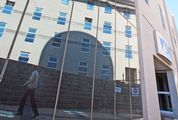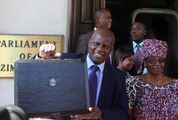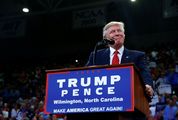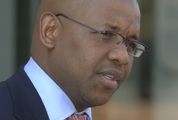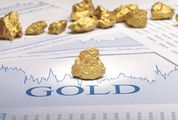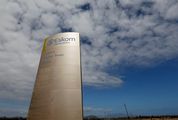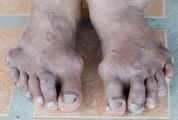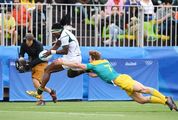THAT former president Nelson Mandela was a fighter is not news: he spent his life battling evil in the cause of good. But that he was a boxer is a myth.
A boxer, that is, in the sense of an athlete stepping through the ropes to lay leather on an opponent in the cause of amateur honour or professional reward.
Mandela never threw a punch in anything more than the scripted anger of a sparring session. He did, however, train as a boxer at the Donaldson Orlando Community Centre — now the Soweto YMCA — alongside more notable pugilists.
Their nicknames and those of the venues they fought at, usually in and around Johannesburg, capture the colour and the circumstances of the time.
Eric "Black Material" Ntsele and Freddie "Tomahawk" Ngidi could be seen in action at places such as the Bantu Men’s Social Centre and Uncle Tom’s Hall, where David "Slumber" Gogotya, Elijah "Maestro" Mokone, Enoch "Schoolboy" Nhlapo, Levi "Golden Boy" Madi, Sexton "Wonderboy" Mabena and Jaos "Kangaroo" Maoto might also feature on the bill.
Perhaps the best of them was Jerry Moloi, who lost his first seven bids for what were called the "South Africa — Transvaal (nonwhite)" versions of the featherweight and lightweight titles before, on March 25 1961, he stopped German Mauser Mhlambi in the 10th round to claim the lightweight crown. Moloi defended his title twice before losing to Philip Sibeko in 1963.
Moloi is central to the myth of Mandela the boxer: he was the other fighter in Bob Gosani’s famous photographs of the future president sparring on a rooftop.
The black-and-white pictures are a superb study in the gritty, noir reality of being black in apartheid South Africa. Their rich character gleams through the grey, but they do not try to hide the harshness of their surroundings.
Mandela’s bare left hand is slung low. His bandaged right is cocked and guarding his chin. He is coiled in readiness. His eyes are hooded and focused. Both he and Moloi wear shorts over heavy, long-sleeved training gear. Their boots are of dark leather and tightly laced.
By then, Mandela was no stranger to the sweet science. It was among the interests he took with him to Fort Hare University in Alice in 1936. Others were long-distance running, weightlifting in the gym, Bible study, and ballroom dancing.
When he moved to Johannesburg in 1943 to study towards a law degree at Wits, boxing crowded out his other hobbies.
"I was never an outstanding boxer," Mandela wrote in his autobiography Long Walk to Freedom. "I was in the heavyweight division, and I had neither enough power to compensate for my lack of speed nor enough speed to make up for my lack of power.
"I did not enjoy the violence of boxing so much as the science of it. I was intrigued by how one moved one’s body to protect oneself, how one used a strategy both to attack and retreat, how one paced oneself over a match.
"I never did any real fighting after I entered politics. My main interest was in training; I found the rigorous exercise to be an excellent outlet for tension and stress. After a strenuous workout, I felt both mentally and physically lighter. It was a way of losing myself in something that was not the struggle.
"After an evening’s workout I would wake up the next morning feeling strong and refreshed, ready to take up the fight again."
But there were more to his interest in the sport than physical and mental sharpness: "Boxing is egalitarian. In the ring, rank, age, colour, and wealth are irrelevant." After his release from prison his involvement with boxing was that of the fan, albeit a superfan.
Vuyani Bungu requested and was granted a meeting with Mandela two days before his fight with Kennedy McKinney in 1994.
At stake was McKinney’s super-bantamweight world title, and the South African was a clear underdog against an opponent who had won gold at the Seoul Olympics and was undefeated in 28 professional fights.
"That meeting went 90% of the way to Vuyani winning that fight," promoter Rodney Berman said of Bungu’s unanimous points victory, which Ring Magazine declared "Upset of the Year".
For all his popular sainthood, Mandela was not above pulling strings behind the scenes.
On the morning of the fight between Lennox Lewis and Mike Tyson in Memphis in 2002, he called Berman and asked for four tickets. "I didn’t tell him the truth — that there was no way I could get them; they were all sold out," said Berman. He resorted to buying the tickets from a scalper for the equivalent of R35,000, and Mandela attended the fight.
Mandela also used boxing to not take himself too seriously. On his arrival at a Baby Jake Matlala fight, he spotted people waiting to receive him. "You might know me. My name is Mandela — Nelson Mandela," he said.
He did not add that he was the only undefeated world champion never to have entered the ring.
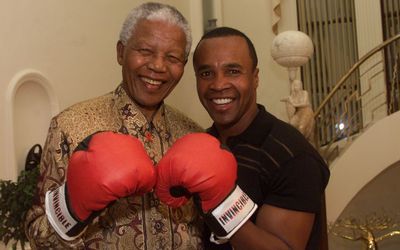
Mandela said boxing was an ‘excellent outlet for tension and stress’ and helped him feel ‘both mentally and physically lighter. It was a way of losing myself in something that was not the struggle,’. Picture: SUNDAY TIMES
THAT former president Nelson Mandela was a fighter is not news: he spent his life battling evil in the cause of good. But that he was a boxer is a myth.
A boxer, that is, in the sense of an athlete stepping through the ropes to lay leather on an opponent in the cause of amateur honour or professional reward.
Mandela never threw a punch in anything more than the scripted anger of a sparring session. He did, however, train as a boxer at the Donaldson Orlando Community Centre — now the Soweto YMCA — alongside more notable pugilists.
Their nicknames and those of the venues they fought at, usually in and around Johannesburg, capture the colour and the circumstances of the time.
Eric "Black Material" Ntsele and Freddie "Tomahawk" Ngidi could be seen in action at places such as the Bantu Men’s Social Centre and Uncle Tom’s Hall, where David "Slumber" Gogotya, Elijah "Maestro" Mokone, Enoch "Schoolboy" Nhlapo, Levi "Golden Boy" Madi, Sexton "Wonderboy" Mabena and Jaos "Kangaroo" Maoto might also feature on the bill.
Perhaps the best of them was Jerry Moloi, who lost his first seven bids for what were called the "South Africa — Transvaal (nonwhite)" versions of the featherweight and lightweight titles before, on March 25 1961, he stopped German Mauser Mhlambi in the 10th round to claim the lightweight crown. Moloi defended his title twice before losing to Philip Sibeko in 1963.
Moloi is central to the myth of Mandela the boxer: he was the other fighter in Bob Gosani’s famous photographs of the future president sparring on a rooftop.
The black-and-white pictures are a superb study in the gritty, noir reality of being black in apartheid South Africa. Their rich character gleams through the grey, but they do not try to hide the harshness of their surroundings.
Mandela’s bare left hand is slung low. His bandaged right is cocked and guarding his chin. He is coiled in readiness. His eyes are hooded and focused. Both he and Moloi wear shorts over heavy, long-sleeved training gear. Their boots are of dark leather and tightly laced.
By then, Mandela was no stranger to the sweet science. It was among the interests he took with him to Fort Hare University in Alice in 1936. Others were long-distance running, weightlifting in the gym, Bible study, and ballroom dancing.
When he moved to Johannesburg in 1943 to study towards a law degree at Wits, boxing crowded out his other hobbies.
"I was never an outstanding boxer," Mandela wrote in his autobiography Long Walk to Freedom. "I was in the heavyweight division, and I had neither enough power to compensate for my lack of speed nor enough speed to make up for my lack of power.
"I did not enjoy the violence of boxing so much as the science of it. I was intrigued by how one moved one’s body to protect oneself, how one used a strategy both to attack and retreat, how one paced oneself over a match.
"I never did any real fighting after I entered politics. My main interest was in training; I found the rigorous exercise to be an excellent outlet for tension and stress. After a strenuous workout, I felt both mentally and physically lighter. It was a way of losing myself in something that was not the struggle.
"After an evening’s workout I would wake up the next morning feeling strong and refreshed, ready to take up the fight again."
But there were more to his interest in the sport than physical and mental sharpness: "Boxing is egalitarian. In the ring, rank, age, colour, and wealth are irrelevant." After his release from prison his involvement with boxing was that of the fan, albeit a superfan.
Vuyani Bungu requested and was granted a meeting with Mandela two days before his fight with Kennedy McKinney in 1994.
At stake was McKinney’s super-bantamweight world title, and the South African was a clear underdog against an opponent who had won gold at the Seoul Olympics and was undefeated in 28 professional fights.
"That meeting went 90% of the way to Vuyani winning that fight," promoter Rodney Berman said of Bungu’s unanimous points victory, which Ring Magazine declared "Upset of the Year".
For all his popular sainthood, Mandela was not above pulling strings behind the scenes.
On the morning of the fight between Lennox Lewis and Mike Tyson in Memphis in 2002, he called Berman and asked for four tickets. "I didn’t tell him the truth — that there was no way I could get them; they were all sold out," said Berman. He resorted to buying the tickets from a scalper for the equivalent of R35,000, and Mandela attended the fight.
Mandela also used boxing to not take himself too seriously. On his arrival at a Baby Jake Matlala fight, he spotted people waiting to receive him. "You might know me. My name is Mandela — Nelson Mandela," he said.
He did not add that he was the only undefeated world champion never to have entered the ring.


